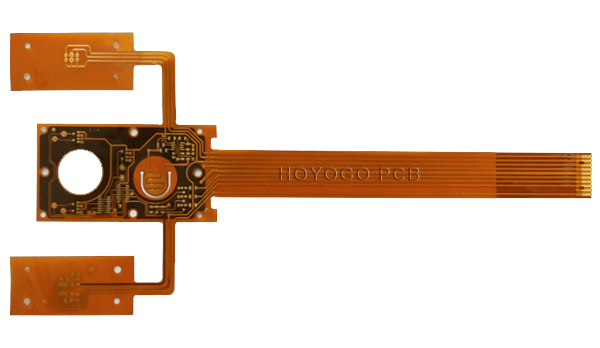Difference between Rolled Copper and Electrolytic Copper in FPC
With the rapid development of electronic technology, FPC is used more and more widely in electronic products. The substrate of FPC is its key component, and the type of copper foil in the substrate has an important influence on the performance of FPC. The commonly used copper foils include rolled copper and electrolytic copper. There are significant differences between the two in manufacturing process and performance characteristics. Do you know what the difference is?

I. Differences in Manufacturing Method
1. Rolled Copper: It laminates high-purity (>99.98%) copper onto the FPC by rolling. The reason for this is that the FPC has excellent adhesion to the copper foil, and the copper foil has high adhesion and operating temperature, and can be dip-soldered in 260°C tin liquid without blistering. The thinnest can be up to 1 mil (industrial unit: mil, which is one thousandth of an inch, equivalent to 0.0254mm).
2. Electrolytic Copper: It can continuously produce layer after layer copper foil under the action of the CuSO4 electrolyte, which enables the thickness of the copper foil to be precisely controlled, and the thickness of copper foil will gradually increase over time. Usually, there are strict requirements for copper foil thickness, ranging from 0.3mil to 3mil. We use a professional copper foil thickness tester to inspect its quality.
II. Differences in Quality and Usage
1. Electrolytic Copper: It is a copper foil made by adsorbing copper ions on the surface of FPC substrate through an electrolytic process. Its notable characteristic is good electrical conductivity, but poor bending resistance.
2. Rolled Copper: It is copper foil obtained by extrusion. Its has good bending resistance, but is slightly inferior to electrolytic copper in terms of conductivity. It is mainly used in the production of components such as cameras in flip phones.
3. From the appearance, electrolytic copper is red, while rolled copper tends to be yellow.
III. Differences in Processing Technology
1. Electronic Copper Foil: It is obtained by precipitating an acid copper plating solution on a bright stainless steel roller to form a uniform copper film, which is then obtained through a continuous striping and winding process.
2. Rolled Copper Foil: It uses copper ingots or blocks of a certain thickness, which are repeatedly rolled and annealed to eventually form the required copper foil thickness.
IV. Difference in the Flexibility of Copper Foil Materials
In order to meet the higher flexibility requirements of most FPC products, many FPC manufacturers tend to use rolled materials. However, there is also a lot of blindness in selecting rolled materials. For example, the characteristics of rolled materials mentioned above and their multiple defects should be properly weighed and evaluated in practical applications.
Experimental tests have shown that the flexibility of rolled copper foil is four times that of ordinary electrolytic copper foil, but its price is relatively high. Therefore, for products with relatively low bending requirements (such as keypads PCB, module PCB, 3D static flexible circuits, etc.), it is possible to consider using high-elongation electrolytic copper foil to replace rolled copper foil to reduce costs. However, when reliability requirements are high (such as sliding mobile phone PCB, folding mobile phone PCB, etc.), rolled copper foil is still a better choice.
HoYoGo is a professional, reliable and stable FPC factory. Based on our rich experience and technical understanding, with our own production capabilities, we can provide you with one-stop service from small and medium to large-scale production, competitive prices and stable quality and delivery guarantee to customize all your requirements.
评论
发表评论